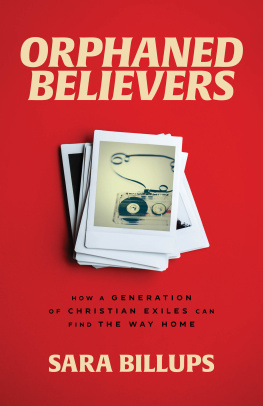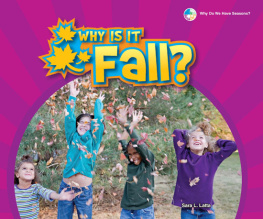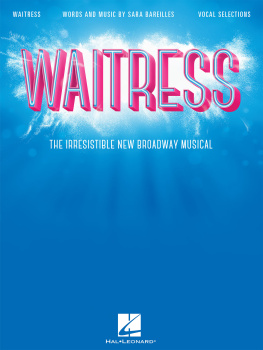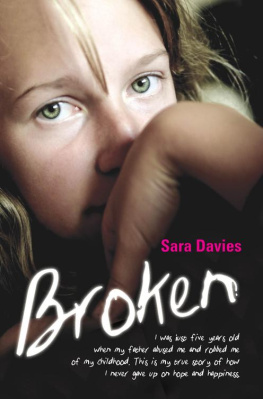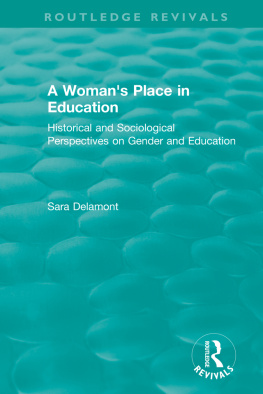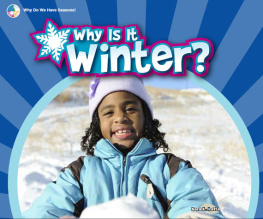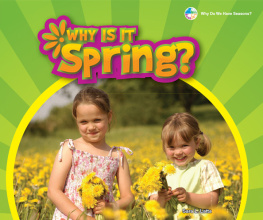Sara Byala is a historian and senior writing fellow in the Center for Programs in Contemporary Writing at the University of Pennsylvania.
The University of Chicago Press, Chicago 60637
The University of Chicago Press, Ltd., London
2013 by The University of Chicago
All rights reserved. Published 2013.
Printed in the United States of America
22 21 20 19 18 17 16 15 14 13 1 2 3 4 5
ISBN-13: 978-0-226-03027-2 (cloth)
ISBN-13: 978-0-226-03030-2 (paper)
ISBN-13: 978-0-226-03044-9 (e-book)
Byala, Sara G.
A place that matters yet: John Gubbinss MuseumAfrica in the postcolonial world / Sara Byala.
pages; cm
Includes bibliographical references and index.
ISBN 978-0-226-03027-2 (cloth: alk. paper)ISBN 978-0-226-03030-2 (pbk. : alk. paper)ISBN 978-0-226-03044-9 (e-book) 1. MuseumAfrica (Johannesburg, South Africa)History. 2. Africana Museum (Johannesburg, South Africa)History. 3. Anthropological museums and collectionsSouth AfricaJohannesburgHistory. 4. Gubbins, John Gaspard, 18771935. 5. South AfricaStudy and teachingSouth AfricaJohannesburgHistory 20th century. 6. Johannesburg (South Africa)History. I. Title.
DT1006.J65B93 2013
069.096822'1dc23
2012043144

This paper meets the requirements of ANSI/NISO Z39.48-1992 (Permanence of Paper).
ACKNOWLEDGMENTS
In July 2010, I visited the Collectors Treasury, an old and remarkably vast warehouse of rare books in the central business district of Johannesburg. I went there in search of an obscure publication that I had long sought to purchase but was never able to find. Tentatively asking the eccentric proprietor if he happened to have heard of a book by one John Gaspard Gubbins, published in 1924, I was astonished that not only did he know the book, but that he was also able to locate a copy immediately, plucking it from one of the many overburdened shelves that fill this eight-story shop. Opening the book, I was further surprised to see a personal inscription from Gubbins, penned in the very handwriting that had become as familiar as my own during my years poring over it.
Later that day, on a whim, I sent an e-mail to the Johannesburg Parks Department in the hopes of locating Gubbinss grave, something I had been unable to do over the preceding years. To my amazement, I received a friendly phone call the next morning telling me the exact location of the long-dead man. Visiting the Brixton Cemetery in the gloaming of a Friday night, under the watchful eye of a panga-wielding guard, I was able to sit for the first time face-to-face, as it were, with the man who had inspired so much effort on my part.
It was hard not to feelduring that twenty-four-hour period of happenstancethat something greater than me had aligned, that, though I was weary of this project that seemed to never end, somehow a force was impelling it to this, its completion. And so, as I move to acknowledge what it was that made this book happen, I tip my hat to John Gaspard Gubbins. For not only did he start something whose worth continues to merit investigation, but he alsounwittinglytaught me, the biographer impossible-to-be-
My debt of gratitude extends to those who lived beyond 1935, on both sides of the Atlantic. I thank, firstly, the committee that oversaw this project when it began as a dissertation. From that first lunch at Emmanuel Akyeampongs home until now, I have benefited from his insightful guidance, both with regard to this undertaking and to my graduate career in general. His insistence that I see South Africa as part of the African continent more generally has greatly impacted my perspective. I feel fortunate to have had him as an academic advisor. Pauline Peters similarly gave of her time and intellect in an effort to push my thinking as far as possible. On the other side of the world, Carolyn Hamilton generously extended her hospitality to make first the University of the Witwatersrand and now the University of Cape Town academic homes away from home. As a mentor and friend, she has shared her immense knowledge and sharp, critical mind with me. She has also brought me into productive dialogue with scholars interested in similar questions. For this and so much more, I thank her.
Beyond my official committee, I extend my gratitude to various members of the Harvard community who, in one way or another, helped me reach this point. I am particularly grateful to Suzanne Blier, Rita Breen, Caroline Elkins, Evelyn Brooks Higginbotham, J. Lorand Matory, and Susan Pederson. Thanks also to those who were my fellow graduate students, for their critiques and support, including Jenny Davis, Carrie Endries, Ariane Liazos, Leora Maltz-Leca, Abena Osseo-Asare, Ruth Simbao, and Lauren Willig. Thanks are also due to the funding bodies that enabled my research: the Sheldon Traveling Fellowship, the Harvard History Department, and the Harvard African Studies Committee.
I also had the privilege of working with exceptional Africanists in the greater Boston area. Diana Wylie was kind enough to share her wealth of knowledge about South Africa with me throughout my graduate career. Her inputas well as that of the Boston University Africanist community more generallyhelped mold my thinking. Jeanne Penvennemy undergraduate advisorcontinues to be both a source of great support and a role model.
On the other side of the Atlantic, in Johannesburg, my thanks goes firstly to my dear cousin Joni Brenner. Without her hospitality, intellectual engagement, and generosity this project would never have been born. I will not soon forget our nights spent talking about Gubbins in her Killarney kitchen. It is to her that I owe the greatest thanks. Many other members of the Johannesburg academia both challenged and encouraged me, and to them, too, I owe a debt of gratitude. In particular, thanks to Muff Anderson, Colin Bundy, David Bunn, Liz Burroughs, Jillian Carman, Liz Delmont, Nziswa Dlamini, David Fig, Verne Harris, Selo Hatang, Scott Hazelhurst, Isabel Hofmeyer, Simonne Horowitz, Jonathan Hyslop, Cynthia Kros, Nessa Leibhammer, Achille Mbembe, Karen Nel, Anitra Nettleton, Sarah Nuttall, Fiona Rankin-Smith, Ruth Sack, Steve Sack, and Ann Wanless.
As a research affiliatefrom afarto the Constitution of Public Intellectual Life group at Wits University from 2006 to 2008 and a participant in its Life of Archive project thereafter, I benefited from the knowledge of this productive assemblage. Thanks in particular to Rory Bester, Lesley Cowling, Anthea Garman, Carolyn Hamilton, Rebecca Kahn, Litheko Modisane, Pascale Mwale, and Kylie Thomas for feedback on an early draft of this books introduction.
For the past several years, as an honorary research affiliate to the Initiative in Archives and Public Culture at the University of Cape Town, I have similarly been in good intellectual company. Here, I would like to thank, specifically, Mbongiseni Buthelezi, Marcelle Faure, Megan Greenwood, Carolyn Hamilton, Saarah Jappie, Shamil Jeppie, Susana Molins Lliteras, Grant McNulty, Hedley Twidle, and John Wright. The support of this initiative, both fiscal and intellectual, enabled a wonderfully productive research trip toward the end of this project. Further afield in Cape Town, I extend my thanks to Leslie Witz for graciously sharing his knowledge with me over a seaside coffee. Most recently, as a cocontributor to the tentatively titled Tribing and Un-tribing the Archive project, I have once more entered into productive debate around questions relating to the possibilities and limits of this museum as an archive. Thanks here go to the projects convenors, Carolyn Hamilton and Nessa Leibhammer, as well as my coauthor, Ann Wanless.

 This paper meets the requirements of ANSI/NISO Z39.48-1992 (Permanence of Paper).
This paper meets the requirements of ANSI/NISO Z39.48-1992 (Permanence of Paper).
